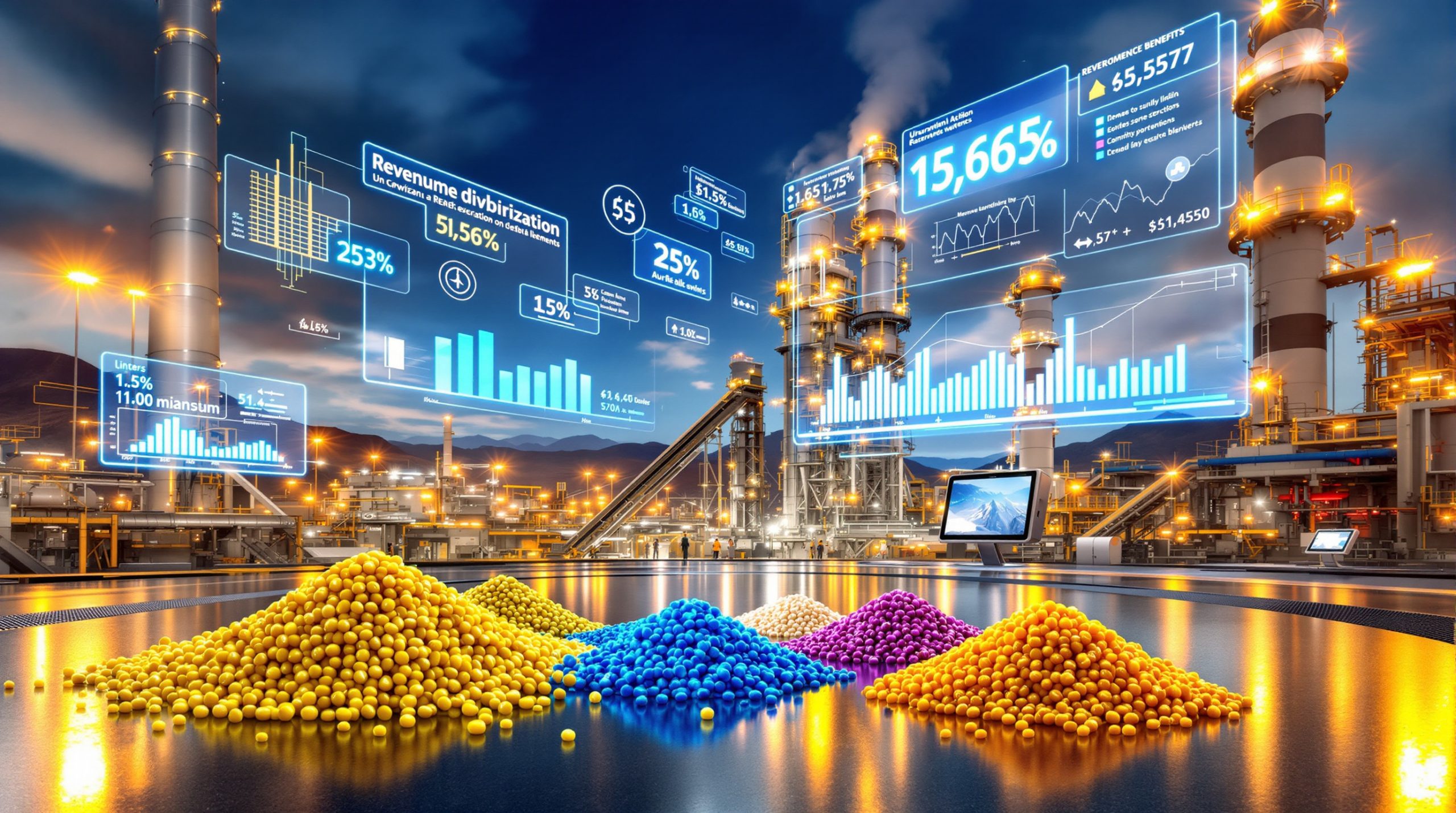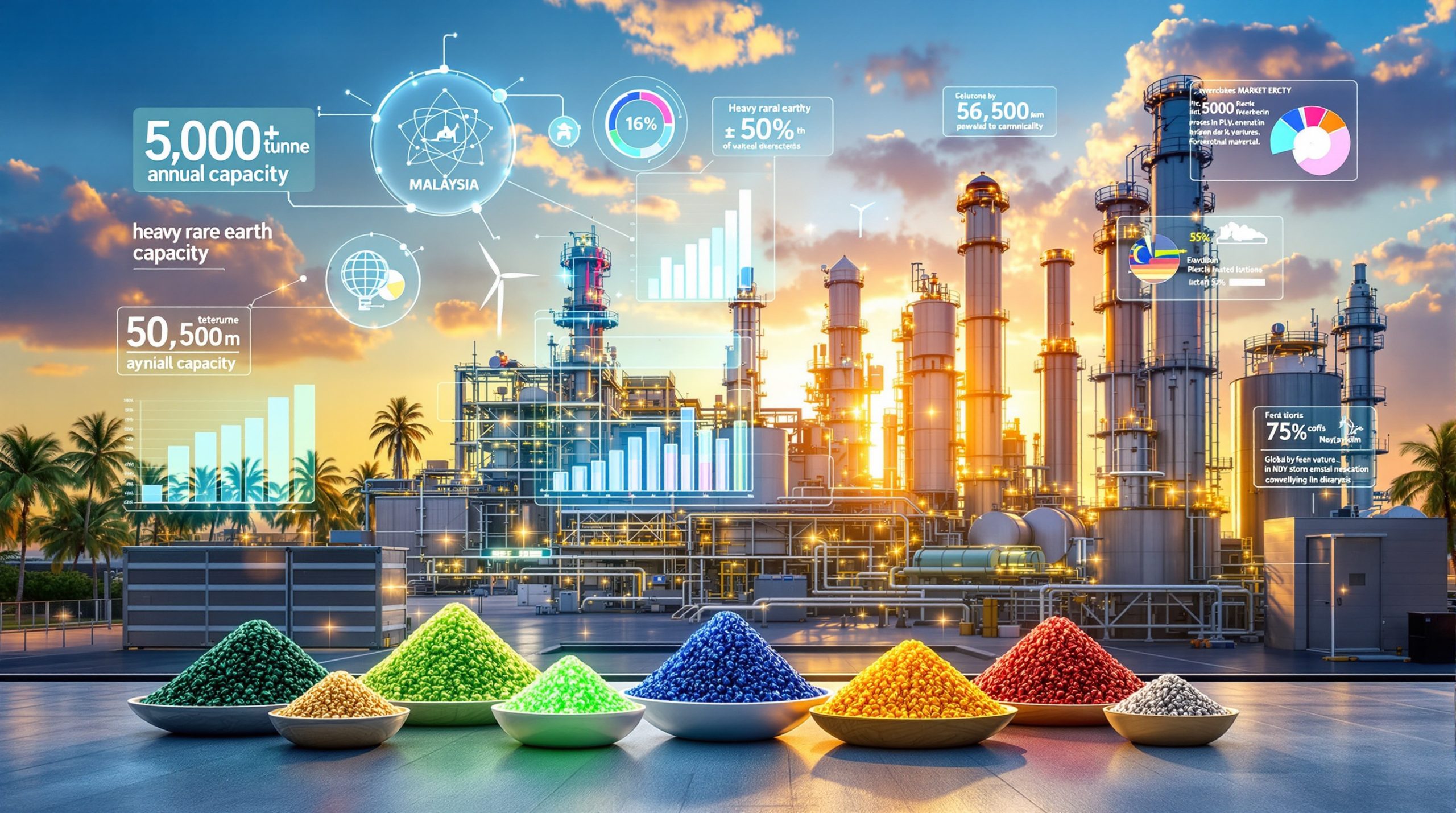Environmental permits for copper smelter operations represent one of the most complex regulatory frameworks in industrial manufacturing. These facilities must navigate multiple layers of federal, state, and local requirements that govern everything from air emissions to water discharge and hazardous waste management. Understanding permitting essentials is crucial for successful project development.
The permitting process typically requires comprehensive environmental impact assessments, detailed engineering plans, and extensive public consultation periods. Most jurisdictions demand that copper smelting facilities demonstrate compliance with Best Available Control Technology (BACT) standards before operations can commence.
Regulatory authorities evaluate potential environmental impacts across several categories: air quality degradation, soil contamination risks, water resource impacts, and community health considerations. The complexity increases when facilities process mixed copper concentrates containing varying levels of arsenic, lead, and other toxic metals.
Air Quality Standards and Emission Limits
Modern copper smelters face stringent air quality requirements designed to protect public health and environmental integrity. Primary pollutants of concern include sulfur dioxide, particulate matter, and hazardous air pollutants such as arsenic, mercury, and lead compounds.
Emission limits vary significantly by jurisdiction but generally follow a tiered approach based on facility size, processing capacity, and local air quality conditions. Large-scale operations processing over 100,000 metric tons annually face the most restrictive requirements.
Key emission parameters monitored include:
• Sulfur dioxide concentrations and mass emission rates
• Total suspended particulates and PM2.5 levels
• Heavy metal concentrations in stack emissions
• Opacity measurements for visible emission control
• Fugitive dust emissions from material handling operations
Hazardous Air Pollutant Controls
Hazardous Air Pollutant (HAP) regulations represent perhaps the most technically challenging aspect of copper smelter permitting. These rules target specific toxic compounds that pose significant health risks even at low concentrations.
Mercury emissions receive particular scrutiny due to bioaccumulation concerns and long-range transport potential. Facilities must demonstrate mercury capture efficiency exceeding 95% through advanced control technologies such as activated carbon injection or specialised scrubbing systems.
Arsenic control requirements have become increasingly stringent, with many jurisdictions requiring emission reductions of 90% or greater compared to uncontrolled levels. This typically necessitates multi-stage pollution control systems combining electrostatic precipitators, fabric filters, and wet scrubbing technologies.
How Do Countries Differ in Their Copper Smelter Permitting Processes?
United States Federal Framework
The United States employs a complex federal-state partnership for copper smelter permitting, with multiple agencies sharing oversight responsibilities. The Environmental Protection Agency (EPA) sets national standards whilst state agencies typically issue and enforce permits.
Title V operating permits for major sources form the cornerstone of the U.S. regulatory approach. These comprehensive permits consolidate all applicable air quality requirements into a single document, streamlining compliance monitoring and enforcement activities.
New Source Performance Standards (NSPS) compliance establishes technology-based emission limits for newly constructed or significantly modified copper smelters. These standards require implementation of proven pollution control technologies regardless of local air quality conditions.
National Emissions Standards for Hazardous Air Pollutants (NESHAP) impose additional requirements specifically targeting toxic air pollutants. The copper smelting NESHAP underwent significant updates in recent years, tightening emission limits and expanding monitoring requirements.
Recent regulatory developments in 2024-2025 have introduced updated NESHAP standards targeting 50% reductions in toxic metal emissions. However, presidential exemptions have been granted for facilities deemed critical to industrial security, creating a complex regulatory landscape for operators to navigate.
Chile's Environmental Assessment System
Chile's approach to copper smelter permitting reflects the country's position as the world's largest copper producer and the strategic importance of the mining sector to the national economy. The Environmental Impact Assessment System (SEIA) provides a comprehensive framework for evaluating large-scale industrial projects.
Regional environmental impact evaluations consider cumulative impacts across multiple facilities within geographic regions. This approach recognises that copper smelting operations often cluster in specific areas, creating potential for synergistic environmental effects.
State-owned versus private facility requirements can differ significantly, with ENAMI and other state enterprises sometimes receiving expedited review processes for projects deemed nationally strategic. However, environmental standards remain consistent regardless of ownership structure.
The recent approval of ENAMI's $1.7 billion copper smelter project in Chile's Atacama region demonstrates the effectiveness of this system. The facility, designed to process 850,000 metric tons of copper concentrate annually, underwent comprehensive environmental review before receiving permits in October 2025.
Integration with mining sector regulations ensures that smelting facilities align with broader mining industry innovation trends. This includes coordination with water rights allocation, tailings management requirements, and community development obligations.
International Best Practice Standards
International best practice standards increasingly influence national permitting frameworks, driven by global supply chain requirements and investor environmental, social, and governance (ESG) expectations. The International Finance Corporation's Performance Standards and similar frameworks provide benchmarks for environmental protection measures.
Technology transfer agreements and joint venture partnerships often require compliance with the most stringent standards among participating countries. This creates a "regulatory race to the top" effect that benefits environmental protection globally.
What Are the Key Emission Targets for Modern Copper Smelters?
Sulfur Dioxide Reduction Requirements
Sulfur dioxide represents the highest-volume pollutant from copper smelting operations, making its control crucial for obtaining an environmental permit for copper smelter operations. Most modern facilities achieve compliance through sulfuric acid plant integration, capturing SO₂ for beneficial use whilst meeting emission standards.
Global SO₂ Emission Standards for Copper Smelters
| Region | Maximum SO₂ Limit | Averaging Period | Technology Required |
|---|---|---|---|
| USA | 650 ppm | 6-hour average | Acid plant + controls |
| Chile | 95%+ reduction | Annual basis | Advanced scrubbing |
| EU | Country-specific | Varies | BAT requirements |
| China | 400 mg/m³ | Daily average | Multi-stage control |
| Peru | 80% reduction | Monthly basis | Acid plant mandatory |
Advanced facilities often exceed these minimum requirements, achieving SO₂ capture efficiencies above 98% through optimised acid plant operations combined with tail gas treatment systems.
Particulate Matter Control Standards
Particulate matter control requirements have become increasingly stringent as scientific understanding of health impacts has evolved. Fine particulate matter (PM2.5) receives particular attention due to its ability to penetrate deep into lung tissue and carry toxic metals.
Modern copper smelters typically employ multi-stage particulate control systems combining:
• Primary cyclones for coarse particle removal
• Electrostatic precipitators for intermediate-sized particles
• Fabric filter baghouses for fine particle capture
• Wet scrubbing systems for final polishing
Emission limits for total suspended particulates generally range from 20-50 mg/m³, depending on jurisdiction and facility capacity. However, some regions now impose separate limits for PM2.5 emissions, typically in the range of 10-20 mg/m³.
Heavy Metal and Toxic Pollutant Limits
Heavy metal emission limits vary significantly based on the specific metals present in feed materials and local environmental sensitivity. Arsenic, lead, mercury, and cadmium face the most restrictive controls due to their toxicity and bioaccumulation potential.
Typical heavy metal emission limits include:
• Arsenic: 0.5-2.0 mg/m³ depending on jurisdiction
• Lead: 1.0-5.0 mg/m³ with stricter limits near populated areas
• Mercury: 0.05-0.2 mg/m³ with continuous monitoring required
• Cadmium: 0.1-0.5 mg/m³ for most applications
How Long Does the Environmental Permitting Process Take?
Pre-Application Planning Phase
The pre-application phase typically requires 12-18 months of intensive preparation work. During this period, project developers must complete baseline environmental studies, conduct preliminary engineering design, and engage with regulatory agencies to identify potential issues.
Air quality modelling studies form a critical component of pre-application work. These sophisticated computer simulations predict pollutant concentrations under various meteorological conditions and operating scenarios. Modelling results directly influence permit conditions and required control technologies.
Community engagement activities during this phase can significantly impact overall permitting timelines. Furthermore, early stakeholder involvement often prevents delays during formal review periods by addressing concerns before they become formal objections.
Formal Review and Public Consultation
Formal review periods typically range from 6-12 months, depending on project complexity and regulatory requirements. Large copper smelters processing over 500,000 metric tons annually often require extended review periods due to their significant environmental footprint.
Public consultation requirements vary by jurisdiction but generally include:
• Publication of draft permit conditions for public comment
• Public hearings in affected communities
• Response to substantive technical comments
• Revision of permit conditions based on stakeholder input
Technical review focuses on pollution control technology evaluation, emission limit feasibility, and monitoring system adequacy. Regulatory agencies often require independent peer review of complex technical submissions to ensure accuracy and completeness.
Conditional Approval and Compliance Monitoring
Conditional approvals typically include specific milestones for construction completion, control system installation, and performance testing. Failure to meet these milestones can result in permit revocation or modification.
Initial compliance monitoring periods usually extend 12-24 months after commercial operation begins. During this period, facilities must demonstrate consistent compliance with all permit conditions through continuous emissions monitoring and periodic testing.
What Technologies Must Copper Smelters Install for Environmental Compliance?
Best Available Control Technology (BACT) Requirements
BACT determinations represent case-by-case evaluations of the most effective pollution control technologies available for specific applications. This approach ensures that environmental permits reflect the latest technological advances whilst considering economic feasibility.
Acid plant installations for SO₂ capture represent the current BACT standard for large copper smelters. Modern double-absorption acid plants achieve SO₂ capture efficiencies exceeding 99.5% whilst producing commercial-grade sulfuric acid as a valuable byproduct.
Baghouse systems for particulate control utilise advanced fabric filter technology to achieve emission rates below 5 mg/m³. Pulse-jet cleaning systems and specialised filter media allow continuous operation with minimal maintenance requirements.
Mercury removal technologies vary depending on mercury concentrations in feed materials. Activated carbon injection systems provide cost-effective mercury control for most applications, whilst specialised sorbents may be required for high-mercury concentrates.
Advanced Pollution Control Systems
Multi-pollutant control strategies are becoming increasingly common as facilities seek to optimise capital and operating costs whilst meeting multiple emission standards simultaneously. Integrated systems can achieve synergistic effects that exceed the performance of individual control technologies.
Wet scrubbing systems using specialised reagents can simultaneously remove SO₂, particulate matter, and selected heavy metals. These systems require careful design to prevent reagent consumption optimisation whilst maintaining removal efficiency.
Selective catalytic reduction (SCR) technology is emerging for nitrogen oxide control, particularly in facilities that operate auxiliary combustion equipment. Whilst not yet widely required, NOx controls may become mandatory as air quality standards continue to tighten.
Continuous Emissions Monitoring Equipment
Continuous emissions monitoring systems (CEMS) provide real-time data on pollutant emissions, enabling immediate response to process upsets and regulatory compliance verification. Modern CEMS technology offers improved accuracy and reliability compared to earlier generation equipment.
Required monitoring parameters typically include:
• SO₂ concentration and mass emission rate
• Particulate matter concentration
• Oxygen content for combustion optimisation
• Stack gas flow rate and temperature
• Opacity for visible emission tracking
Advanced CEMS installations may include mercury continuous monitoring, particularly for facilities processing high-mercury concentrates. These systems require specialised sampling and analytical equipment due to mercury's unique chemical properties.
How Do Recent Policy Changes Affect Copper Smelter Permits?
2024-2025 Regulatory Updates in the United States
Recent regulatory developments have created both opportunities and challenges for copper smelter operators. Updated NESHAP standards targeting 50% reductions in toxic metal emissions represent the most significant change in federal requirements in over a decade.
Presidential exemptions and industrial security concerns have introduced complexity to the regulatory landscape. Certain facilities deemed critical to national security may receive temporary exemptions from new requirements, creating competitive disparities within the industry.
50% reduction targets for toxic metal emissions require most existing facilities to upgrade pollution control systems significantly. Implementation timelines typically allow 3-5 years for major modifications, but smaller facilities may struggle to meet these deadlines cost-effectively.
Chile's Infrastructure Modernisation Initiatives
Chile's commitment to copper industry modernisation is evident in recent project approvals and regulatory streamlining efforts. The $1.7 billion Atacama region smelter approval demonstrates the government's support for strategic infrastructure development.
850,000 metric tons annual processing capacity positions the new ENAMI facility among the world's largest copper smelters. This scale enables implementation of advanced pollution control technologies that may not be economically viable for smaller operations.
240,000 tons copper cathode production capability reflects integration of smelting and refining operations, reducing overall environmental impact through improved process efficiency and reduced transportation requirements.
The facility's location in the Atacama region takes advantage of existing infrastructure whilst supporting regional economic development. In addition, environmental permit conditions include community benefit sharing arrangements and local employment preferences.
Global Trends Toward Stricter Environmental Standards
International pressure for enhanced environmental performance continues to drive regulatory development worldwide. Supply chain sustainability requirements from major copper consumers are creating de facto standards that exceed minimum regulatory requirements in many jurisdictions.
Carbon footprint considerations are beginning to influence permitting decisions, with energy efficiency and renewable energy integration becoming evaluation criteria. This trend is particularly pronounced in jurisdictions with carbon pricing mechanisms or net-zero commitments. Consequently, decarbonisation benefits are increasingly factored into permit evaluations.
What Are the Economic Implications of Environmental Permits?
Capital Investment Requirements for Compliance
Environmental compliance represents a significant portion of total project costs for modern copper smelters. Pollution control equipment typically accounts for 15-25% of total capital investment, with this percentage increasing for facilities processing complex or high-contaminant feed materials.
Major capital cost categories include:
• Acid plant installation: $50-100 million depending on capacity
• Baghouse systems: $20-40 million for large installations
• Mercury removal equipment: $5-15 million depending on technology
• Continuous monitoring systems: $2-5 million for comprehensive coverage
• Engineering and construction management: 10-15% of equipment costs
Operating Cost Impacts from Pollution Control
Operating costs for environmental compliance extend beyond equipment depreciation to include energy consumption, reagent costs, maintenance expenses, and specialised labour requirements. These ongoing costs significantly impact facility economics and market competitiveness.
Energy consumption for pollution control systems typically represents 5-10% of total facility power requirements. Baghouse fan systems, wet scrubber pumps, and acid plant operations contribute to this load, making energy efficiency optimisation crucial for cost control.
Maintenance costs for pollution control equipment often exceed those for primary smelting equipment due to the harsh operating environment and stringent reliability requirements. For instance, planned maintenance programmes and spare parts inventory management become critical success factors.
Market Competitiveness and Supply Chain Security
Environmental compliance costs create competitive advantages for facilities with modern, efficient pollution control systems whilst potentially disadvantaging older operations with higher compliance costs. This dynamic drives industry consolidation and technology modernisation.
Supply chain security considerations increasingly favour facilities with robust environmental compliance records. Major copper consumers prefer suppliers with stable permitting status and demonstrated environmental performance to avoid supply disruption risks.
How Do Public Health Considerations Influence Permit Decisions?
Community Impact Assessments
Public health protection forms a cornerstone of modern environmental permitting decisions. Regulatory agencies conduct comprehensive health risk assessments that evaluate potential impacts from both routine operations and accident scenarios.
Health risk evaluation methodologies include:
• Dispersion modelling to predict pollutant concentrations
• Exposure pathway analysis for multiple routes of contact
• Dose-response relationships for specific pollutants
• Cumulative risk assessment including existing sources
• Sensitive population evaluation (children, elderly, chronically ill)
Air Quality Monitoring Requirements
Ambient air quality monitoring provides ongoing verification that permitted facilities operate within acceptable health risk parameters. Monitoring networks typically include multiple stations positioned to capture maximum impact areas and sensitive receptor locations.
Real-time monitoring capabilities enable immediate response to exceedance events, minimising potential health impacts through rapid corrective action. Modern monitoring equipment provides data quality suitable for regulatory compliance verification and public health protection.
Health Risk Evaluation Processes
Quantitative health risk assessments utilise sophisticated modelling to predict cancer risks and non-cancer health effects for exposed populations. These assessments inform permit conditions and required control technology selections.
Cancer risk levels below 1 in 100,000 are generally considered acceptable for individual pollutants, with cumulative risks from multiple pollutants typically required to remain below 1 in 10,000. Non-cancer effects are evaluated using hazard quotients that must remain below unity for individual compounds.
What Happens When Copper Smelters Fail to Meet Environmental Standards?
Enforcement Actions and Penalties
Environmental violations trigger escalating enforcement responses designed to achieve rapid compliance whilst deterring future violations. Initial violations typically result in notice of violation letters requiring immediate corrective action and compliance schedules.
Penalty structures generally include:
• Administrative penalties: $10,000-50,000 per violation day
• Civil penalties: Up to $100,000 per violation day for major sources
• Criminal penalties: Possible for wilful violations causing environmental harm
• Supplemental environmental projects: Community benefit requirements
• Facility modifications: Required upgrades to prevent future violations
Permit Revocation Procedures
Persistent or severe violations can result in permit revocation proceedings that effectively shut down facility operations. These procedures include due process protections but can proceed rapidly when public health threats are identified.
Permit revocation typically requires demonstration that violations are likely to continue despite enforcement actions or that facility operations pose imminent threats to public health or environmental quality. Economic hardship alone is rarely accepted as justification for continued non-compliance.
Facility Closure Risks and Economic Consequences
Facility closures due to environmental non-compliance create significant economic disruption for local communities and copper supply chains. Recent closure events have highlighted the importance of proactive compliance management and pollution control system maintenance.
Economic consequences extend beyond direct facility impacts to affect copper concentrate suppliers, transportation providers, and downstream processing facilities. These ripple effects create strong incentives for industry-wide compliance improvement efforts.
Future Outlook: How Will Environmental Permits Evolve?
Climate Change Considerations in Permitting
Climate change mitigation requirements are increasingly influencing environmental permit conditions. Carbon intensity metrics, energy efficiency standards, and renewable energy integration requirements are becoming standard evaluation criteria.
Adaptation measures for climate resilience are also receiving attention, particularly regarding extreme weather events and changing precipitation patterns. Facility design standards may need updating to address increased flood risks or drought conditions.
Energy Transition Demand and Regulatory Balance
Growing demand for copper in renewable energy applications creates tension between environmental protection and energy transition goals. Regulatory agencies are developing frameworks to balance these competing priorities whilst maintaining environmental standards.
Strategic material considerations may influence permit review timelines and technology requirements, potentially accelerating approval processes for projects deemed critical to energy transition success. However, environmental standards are unlikely to be compromised despite these pressures.
Furthermore, natural capital in mining considerations are becoming increasingly important in permit evaluations as regulators seek to balance resource extraction with ecosystem preservation.
Technology Innovation and Compliance Pathways
Emerging pollution control technologies offer opportunities for improved environmental performance at reduced costs. Regulatory frameworks are adapting to accommodate innovative approaches whilst ensuring performance reliability.
Promising technological developments include:
• Advanced sorbent materials for mercury control
• Hybrid wet-dry scrubbing systems for multi-pollutant removal
• Artificial intelligence optimisation of control system operation
• Process integration approaches reducing overall emissions
• Alternative smelting technologies with inherently lower emissions
Additionally, reclamation innovation is becoming integral to environmental permitting as facilities must demonstrate comprehensive end-of-life planning.
"The future of copper smelting lies in achieving operational excellence whilst exceeding environmental standards through technological innovation and proactive compliance management," notes a leading environmental consultant in the mining sector.
Disclaimer: Environmental permitting requirements change frequently and vary significantly by jurisdiction. This information is provided for educational purposes only and should not be considered as regulatory guidance. Project developers should consult with qualified environmental consultants and regulatory agencies for current, site-specific requirements.
Ready to Capitalise on Copper Market Opportunities?
The complex environmental permitting landscape for copper smelters creates significant investment opportunities for informed investors who understand which companies can navigate these regulatory challenges successfully. Discovery Alert's proprietary Discovery IQ model delivers real-time alerts on significant ASX mineral discoveries in copper and other commodities, instantly empowering subscribers to identify actionable opportunities ahead of the broader market when companies announce major breakthroughs or secure crucial environmental approvals. Begin your 30-day free trial today and secure your market-leading advantage in this rapidly evolving sector.




